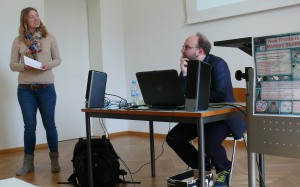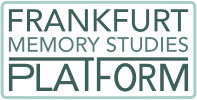 As part of the Lecture Series New Frontiers in Memory Studies, Sébastien Fevry (University of Louvain) talked about “Illegal Migrants and National Memory in Contemporary French Cinema” in Frankfurt on Tuesday, 22nd April 2014.
As part of the Lecture Series New Frontiers in Memory Studies, Sébastien Fevry (University of Louvain) talked about “Illegal Migrants and National Memory in Contemporary French Cinema” in Frankfurt on Tuesday, 22nd April 2014.
Click here to see a video recording of the lecture.
Abstract:
The purpose of this lecture is to understand one of the specificities of contemporary French Cinema in the representation of illegal Migrants, which is the fact that the films about migrants allow us to return to several aspects of national memory of French people themselves. Unlike British cinema, for example, it seems that French films about immigration frequently connect the question of undocumented migrants with memories of crimes perpetrated during the Occupation.
To explore this connection, my lecture will deal with films such as Welcome (Lioret, 2009), Les Mains en l’air (Goupil, 2010) or Le Havre (Kaurismäki, 2011). These films are interesting because they link the current question of illegal migrants to the situation of the Jews and The Righteous of France during the Second World War. In this way, these films give an historic legitimacy to the question of undocumented immigrants by linking it to the fightings and resistance movements of the past. It’s at this level that the critical function of these films plays out, especially in the context of the Sarkozian politic which considers immigration as a threat to national identity. However, the social importance of films such as Welcome should not make us overlook other films devoted to illegal migrants where the allusions to the past tend to reduce the singularity of the question of immigration. In several family comedies such as Mes héros (Besnard, 2012), the connection to the Occupation is above all the pretext to valorize the determination and the courage of the hosting family, with, as its counterpart, the trivialization of the character of the migrant.
To better understand the connection between past and present, my lecture will take into account the question of family memory. This framework will allow us to grasp at once the ambivalence of the films, their impact on society and how they integrate the contemporary question of immigrants with more distant memories. In the films dealt with, it is certainly not by chance that a new relationship to memory emerges in recomposed families who replace the question of filiation by the question of adoption.


